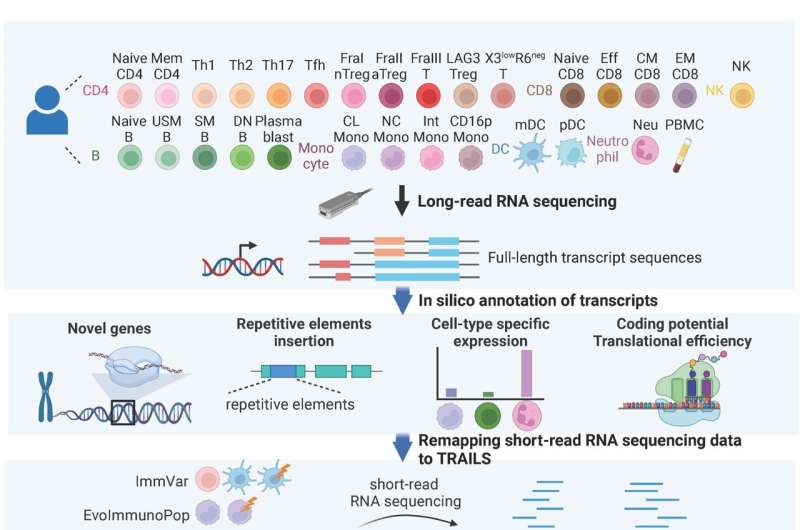This article has been reviewed according to Science X's editorial process and policies. Editors have highlighted the following attributes while ensuring the content's credibility:
fact-checked
peer-reviewed publication
trusted source
proofread
Study uncovers new insights into alternative splicing and disease associations

Alternative splicing, a process where a single gene can give rise to multiple different proteins via inclusion or exclusion of certain segments of the gene sequence, is known to occur in over 90% of human genes. This leads to the production of numerous transcript isoforms (splice variants of an expressed gene) crucial for protein function and cellular processes. Despite previous research on mechanisms underlying alternative splicing and genetic variants affecting splicing, understanding the complete diversity of isoforms has been challenging.
In a study published on 28 May 2024 in Nature Communications, researchers from Tokyo Medical and Dental University (TMDU) in Japan revealed significant new insights into alternative splicing and its association with complex diseases, especially immune-mediated diseases. This research highlights the limitations of traditional short-read sequencing methods in capturing the full spectrum of isoform diversity, emphasizing the revolutionary potential of long-read sequencing technology.
The study employed long-read RNA sequencing (RNA-seq), a technique that can determine the base sequence of long regions of RNA molecules, to map RNA transcripts in 29 immune cell subsets from a healthy individual. Long-read sequencing technology, compared to widely-used short-read sequencing technology, can improve mapping accuracy, genome assembly, and structural variation detection.
This approach allowed for the identification of novel isoforms, the understanding of cell-type-specific splicing patterns, and the exploration of the role of repetitive DNA sequences in isoform diversity. It involved a comprehensive characterization of transcript isoforms within the purified immune cell subsets, followed by validation with additional peripheral blood mononuclear cells (PBMCs).
Researchers compiled this information into a database, which they named TRAILS. Put simply, TRAILS is a database that contains the full-length structure of expressed genes in human immune cells.
One of the study's significant findings was the identification of numerous readthrough transcripts, such as a novel isoform at the TOMM40-APOE locus linked to Alzheimer's disease. This highlights the importance of these understudied isoforms in disease genetics. Additionally, the research revealed cell-type-specific splicing patterns and their impact on gene function, particularly through 3'-UTR regions, along with the relationship between transcript features and translational efficiency.
Furthermore, using TRAILS, researchers performed an integrated analysis of paired RNA-seq and genotype data and identified several transcripts associated with the risk of developing immune-related diseases. The number of disease-linked transcripts identified by TRAILS was greater than that of the widely used public atlas, GENCODE, indicating the utility of TRAILS specifically for immune cells.
Professor Yuta Kochi, the senior author of the study, explains, "We leveraged integrative genetic analyses to identify isoforms associated with specific diseases. These disease-associated transcripts include previously unknown transcripts that, combined with the detailed transcript information in our extensive database, allowed us to infer the mechanism of the disease."
Dr. Jun Inamo, the first author, says, "These findings advance our understanding of the association between alternative splicing and disease genetics. By uncovering previously unknown isoforms and exploring their implications in disease pathways, our study could pave the way for more targeted and effective interventions for complex diseases."
This study marks a crucial milestone in genomic research, emphasizing the importance of understanding alternative splicing in unraveling the complexities of human genetics. It advances our understanding of immune system complexities and disease mechanisms and provides insights into human genome evolution and immune system functions. By linking genomic data with functional analysis, TRAILS aids in our understanding of the pathology of immune-mediated diseases and other conditions such as Alzheimer's disease.
The discoveries made in this research thus have the potential to revolutionize the genomic field, offering hope for improved diagnostic and therapeutic strategies in the future.
More information: Jun Inamo et al, Long-read sequencing for 29 immune cell subsets reveals disease-linked isoforms, Nature Communications (2024). DOI: 10.1038/s41467-024-48615-4





















